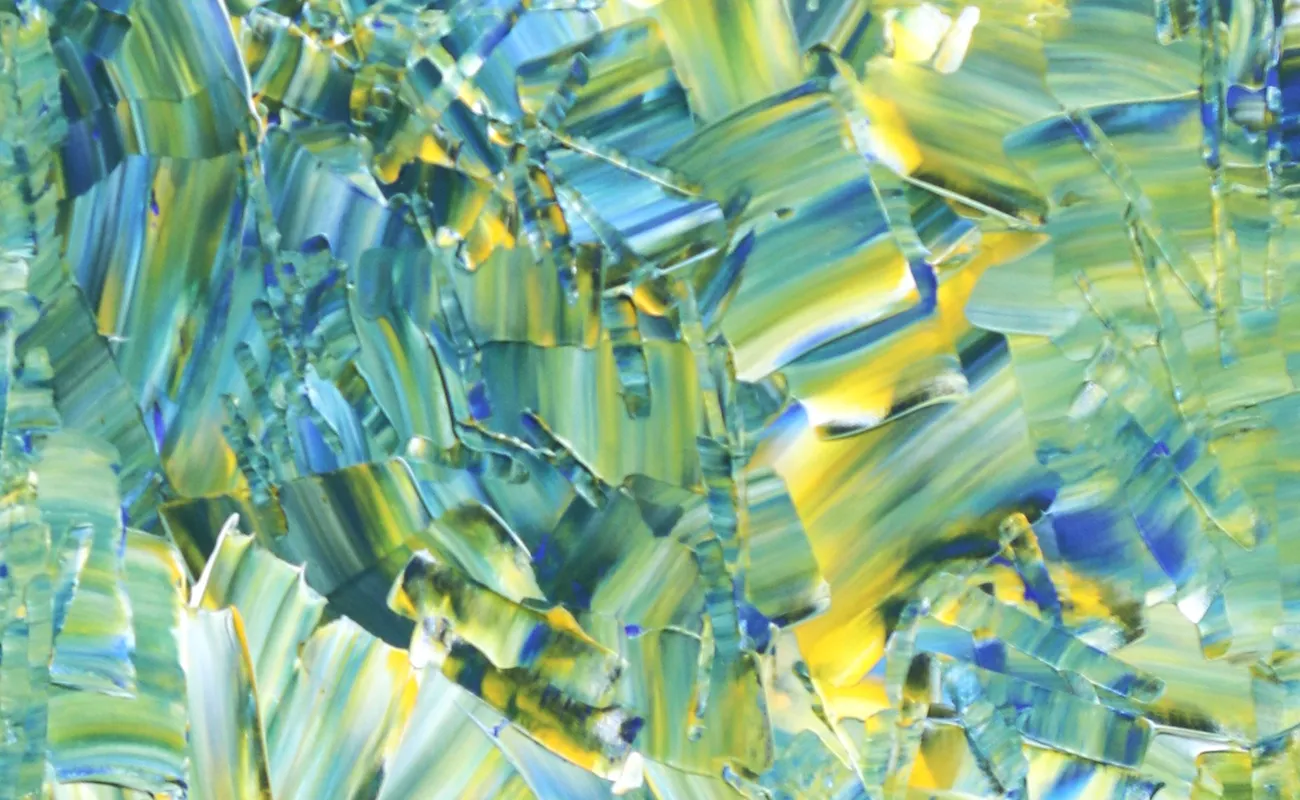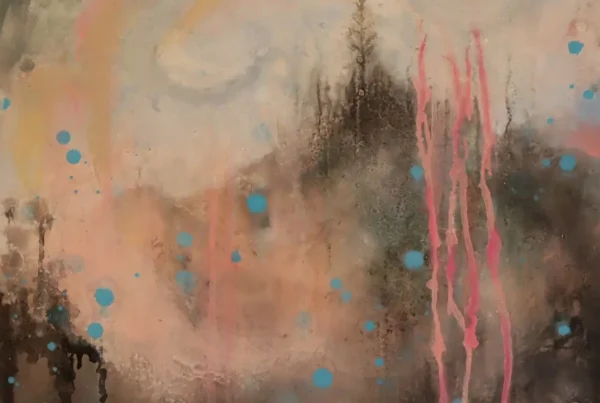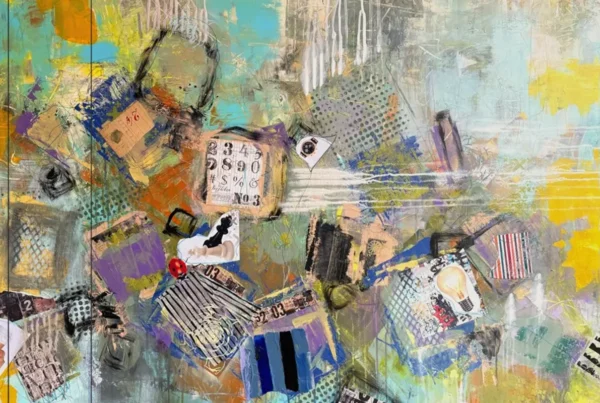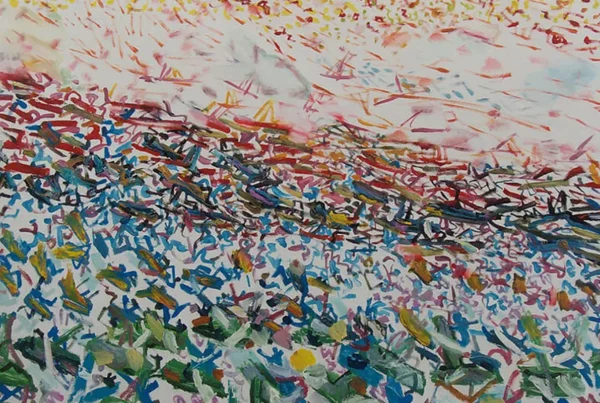“Art is all about FREEDOM… I trust the process method of painting, allowing the artwork to develop organically through multiple layers, textures and bold colors.”
A Journey Rooted in Cultural Heritage and Science
Antoine Khanji’s artistic path began in the ancient city of Homs, Syria, where his early childhood was deeply influenced by the vibrant colors of the Middle East. Watching his father paint for hours at a time instilled in him not just an appreciation for art but also a technical understanding of how colors, shapes, and textures come together. Although Khanji moved to Canada in 1980, his Middle Eastern heritage left an indelible mark on his artistic expression, particularly in his choice of strong primary colors, reminiscent of the hot summers of his youth. These elements of his background formed the foundation of a style that seeks to evoke a sense of wonder and joy.
Khanji’s dual interest in both science and art has consistently shaped his work. While studying Computer Science and Mathematics at Bishop’s University in Quebec, he found himself gravitating towards painting, experimenting with oil as his primary medium. His work from this period was critiqued by the late Elias Zayat, a prominent figure in Syrian art, a mentorship that further inspired Khanji’s creative development. Even as he pursued a long career in Information Technology, his passion for art remained ever-present, leading to his first oil painting exhibition in 1984. This duality—of science guiding art and art illuminating scientific inquiry—has been central to his creative philosophy.
For Khanji, art is more than a visual experience; it is a tool for connection and contemplation. Using acrylics and palette knives, he crafts pieces that embody a vivid exploration of form and texture. His works are not static but dynamic—an evolving process that invites the viewer into a world where the beauty of existence is magnified through abstract shapes and bold, layered hues. Each painting is a testament to his love for the creative process, offering a sanctuary from the chaotic energy of the modern world.

Antoine Khanji: The Artistic Evolution of a Modern Nomad
Khanji’s approach to painting is heavily influenced by a lifelong pursuit of freedom in artistic expression. He refuses to bind himself to a single style, preferring to allow his creativity to unfold without restrictions. Over the years, he has explored a range of artistic genres, moving from landscapes to abstract forms. His current body of work is rooted in spontaneity, driven by what he describes as “natural selection applied to art.” The process begins with aggressive, instinctual brushstrokes, and as the paint settles, the piece develops organically, layer by layer. This methodology underscores Khanji’s belief that creativity thrives when it is not confined by rigid plans or structures.
Much of his work reflects this tension between logic and creative freedom. On one hand, his scientific background informs his attention to composition, value, and color saturation—essential elements that guide the formal aspects of his paintings. On the other hand, his art remains unpredictable, often evolving into something entirely different from his original vision. This balance between control and chaos allows his paintings to resonate with viewers on multiple sensory levels. According to Khanji, a successful piece should be not only seen but also felt, heard, and even smelled—an experience that engages all the senses.
Khanji’s full-time commitment to art only began later in life. It was during the COVID-19 pandemic that he made the decision to leave his career in system analysis behind, dedicating himself entirely to painting at the age of 60. For him, this transition felt like a return to a long-dormant passion, a rediscovery of the creative freedom he had cultivated as a young artist. Now, he paints every day, allowing inspiration to find him through the daily act of showing up in his studio.
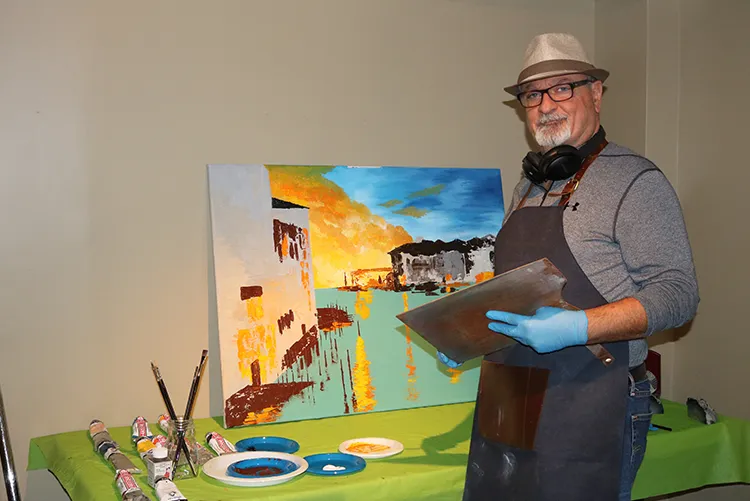
From Oil to Acrylic: A Mastery of Mediums
While oil was once Khanji’s preferred medium, practical considerations led him to shift towards acrylic paints. Living in Canada, where the climate often confines him to indoor studios, Khanji developed a slight allergy to the pigments and solvents used in oil paints. This health concern prompted him to explore acrylics, which he now uses to achieve the same depth and texture that characterized his earlier oil-based works. Acrylics, with their quick drying time and flexibility, have become the perfect medium for his fast-paced, spontaneous style of painting.
Khanji’s ability to adapt to new materials without compromising the integrity of his artistic vision speaks to his versatility as an artist. The textures and layers that once defined his oil paintings are now recreated through acrylics, allowing him to maintain his signature style while experimenting with new techniques. His works are deeply layered, with intricate mark-making and bold, energetic strokes that bring each piece to life. The vibrant hues he employs—drawn from his Middle Eastern heritage—remain a constant, serving as a visual thread that connects his past and present works.
In addition to traditional painting, Khanji has embraced the digital realm, discovering the possibilities of digital art through platforms like Samsung’s Penup. His pioneering work in this medium earned him a place in the Penup Hall of Fame in 2018, where he continues to explore new ways of blending technology and artistry. With over 11,000 followers, Khanji’s digital creations showcase the same passion and attention to detail that define his physical paintings, further expanding the scope of his artistic influence.
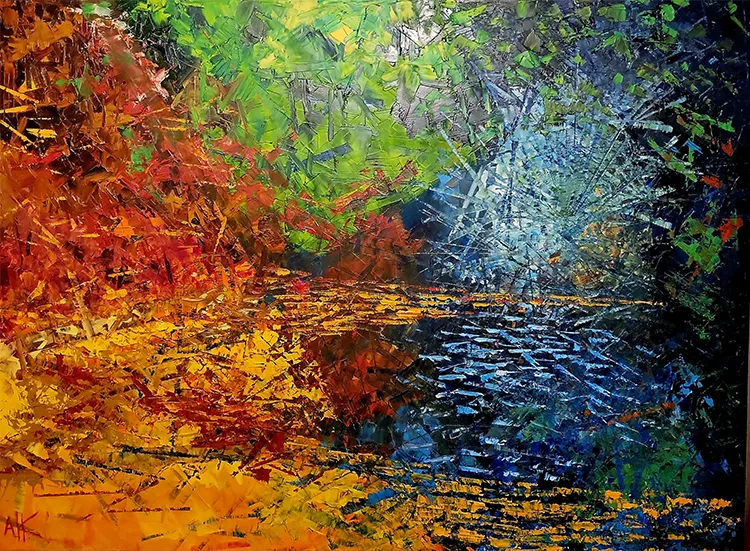
Antoine Khanji: Creating Amidst Chaos and Finding Serenity
At the heart of Antoine Khanji’s artistic practice is a deep sense of connection to the world around him, both its chaos and its beauty. He describes his work as a reflection of the world’s turbulence, but also as an offering of hope. His current project, a series of paintings addressing the chaos in the world, strives to communicate a message of optimism for future generations. In this body of work, Khanji portrays both the discord of the times and the potential for transformation, using art as a medium to inspire change and encourage reflection.
Khanji’s studio is a sacred space where he immerses himself in the act of creation, free from distractions. With classical music playing softly in the background, a cup of tea by his side, and thirty minutes of meditation to center his mind, he enters a state of focused calm. His workspace reflects his minimalist needs—only brushes, canvases, and quietude are required for him to begin his process. Once engaged, time seems to fade, and the outside world no longer intrudes. This meditative approach allows him to produce works that are not only visually striking but emotionally resonant.
Despite the challenges that come with pursuing art full-time later in life, Khanji remains committed to sharing his passion with the world. His inspirations are varied and diverse—ranging from the emotional intensity of Vincent van Gogh to the surreal visions of Salvador Dalí. By blending these influences, he has created a body of work that is both deeply personal and universally accessible. His paintings are an invitation to pause, to find serenity in the midst of chaos, and to reconnect with the beauty that often goes unnoticed in everyday life.



